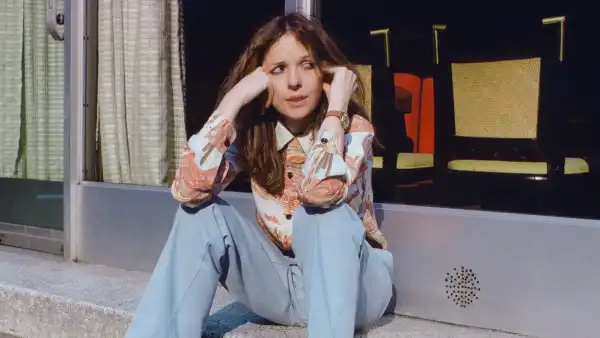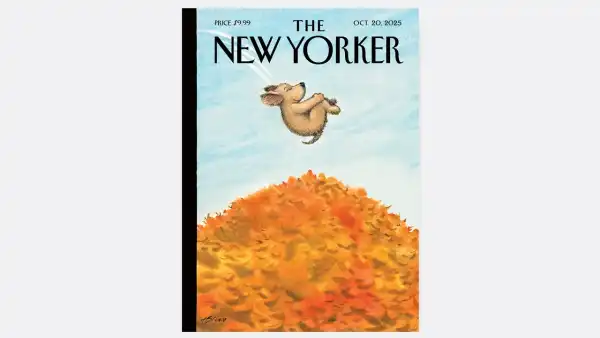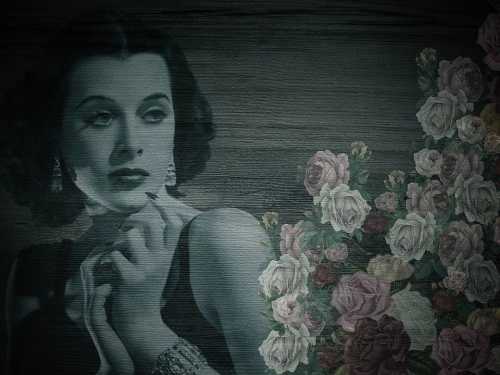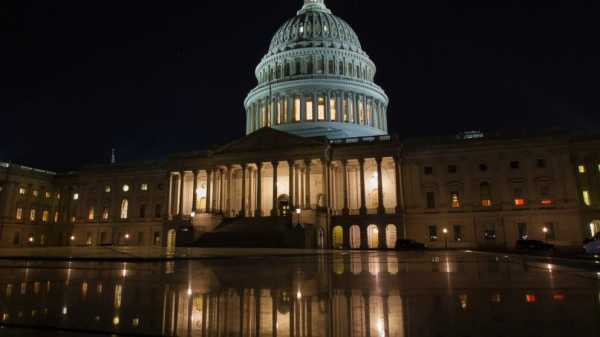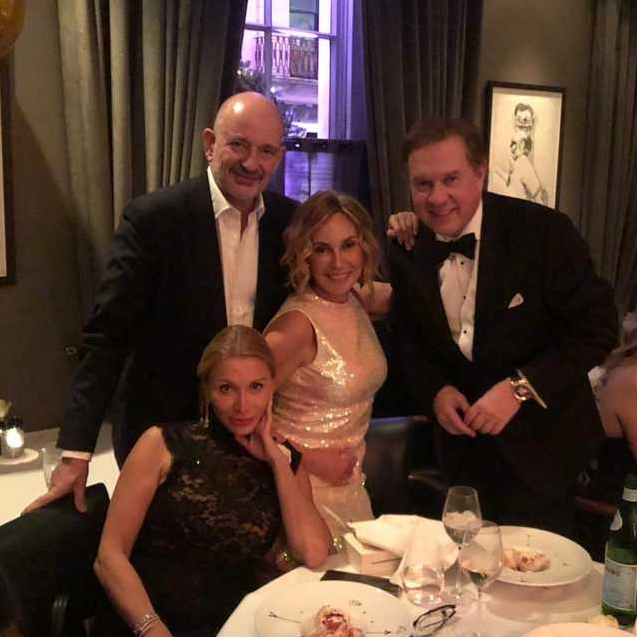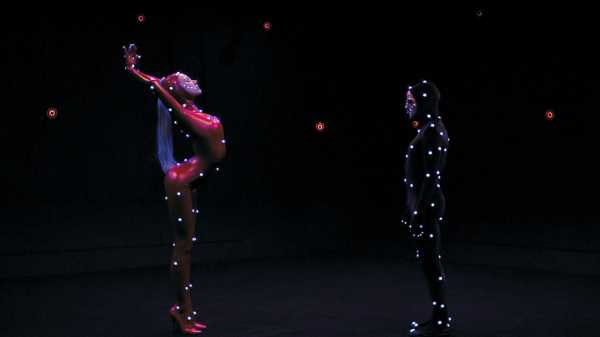
The end of 2022 offered up a trio of movies by name-brand directors that are about the world of movies: precocious D.I.Y. filmmaking in Steven Spielberg’s “The Fabelmans,” behind-the-scenes classic Hollywood in Damien Chazelle’s “Babylon,” and even the work and lives of a movie theatre’s staff in Sam Mendes’s “Empire of Light.” In these films, the story of the greatness of cinema is the story of how the sausage is made and served, and even how the pig was raised. The history of cinema is rich in movies that depict the world of movies—which spotlight the personalities, celebrate the art, look frankly at the business, reveal the off-camera conflicts that fuel and hinder productions, and lay bare the ravenous force of filmmaking’s commercial and emotional demands.
Several of these films are incontrovertible classics, such as “Singin’ in the Rain” and the first two versions of “A Star Is Born.” (The 1937 one is grittier; the 1954 one is Judy Garland’s greatest showcase.) It isn’t only Hollywood that portrays its own fault lines and idiosyncrasies; the world of movies is depicted with vast variety in international films and in independent ones, and what gets dramatized ranges from moviegoing to gatecrashing, from production to projection, from dreams and plans to fame or failure—from the rising passion of young cinephiles and the tenuous glory of professionals to the retrospective celebration of great achievements and the decrepitude of outcasts. They depict the making of fiction, documentary, and animated movies, reflexive films, student films, even imaginary films.
Because movies about movies hold their own methods—their own identity—up to scrutiny, they often bend toward aesthetic radicalism. (Almost any film by Jean-Luc Godard would count, including the one that I put at the top of my Sight and Sound list, “King Lear.”) Many of the great ones are relatively recent, because the self-scrutiny of the art, and the development of new forms in which to do so, is the product of decades of consistent and uncompromising cinematic advance. This list brings together a handful of my favorites in the genre, in chronological order.

Buster Keaton, at right, in “Sherlock Jr.”Photograph from Everett “Sherlock Jr.”1924, Buster Keaton
The loopily sentimental tale—of a projectionist who loses his fiancée over a false accusation and dreams himself into a movie of stunt-filled romantic heroism in order to find the solution to his problem—gives rise to some of Keaton’s most giddily surrealistic and balletically harrowing stunts. It also suggests that popular movies’ hyperbolic action fantasies are merely ego-gratifying delusions.
“The Last Command”1928, Josef von Sternberg
Impostor syndrome goes both ways: some people are propelled downward, from aristocratic heights, into the workaday tumult of show business. Sternberg’s drama, based on real events, is of a Russian general, a refugee after the Revolution, who lands in Hollywood to serve as a mere extra and finds that his art is inseparable from his life—and from his not-so-distant glory days.
“Show People”1928, King Vidor
Hollywood’s eternal conflict between art and a pie in the face gets worked out with aptly caustic and antic results in Vidor’s fictionalized look behind the scenes at an aspiring actress’s pothole-pocked road to stardom—and at the real-life gallery of cinematic luminaries that she aspired to join.
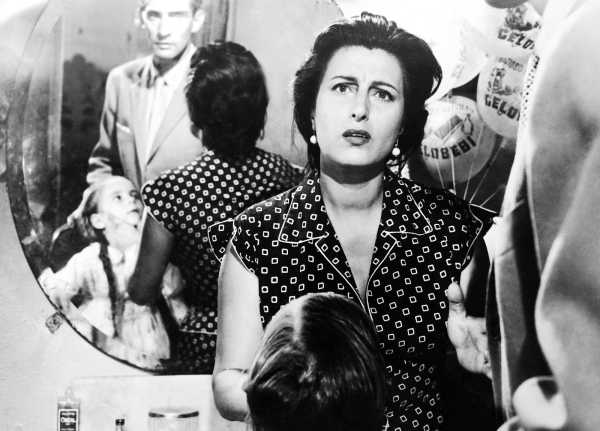
Anna Magnani in “Bellissima.”Photograph from Everett “Bellissima”1951, Luchino Visconti
The desperation that impels stage parents to drive stage children mercilessly is embodied, in this grand-scale satirical melodrama, by the grandest dramatic personality of the postwar Italian cinema, Anna Magnani.
“The Barefoot Contessa”1954, Joseph L. Mankiewicz
Sometimes it takes distance to gain clarity, and this drama of a Spanish dancer discovered in a rough-edged night club by a fading Hollywood director puts the American way of filmmaking—and the fabulous lives that studio business exalts, fosters, distorts, and thwarts—into sharp and grim perspective.
“Two Weeks in Another Town”1962, Vincente Minnelli
Yet more distance, yet more clarity, or, when is a sequel not a sequel: Minnelli follows up on his 1952 inside-Hollywood drama “The Bad and the Beautiful” by treating it as the work of a fictional character in this tale of Hollywood on the edge of a commercial breakdown, set in Italy, amid the shoot of a studio film at Cinecittà, in Rome, and amid a looming generational shift and an accompanying shift in mores. By being alert to the times, Minnelli was ahead of them.
“La Ricotta”1963, Pier Paolo Pasolini
An oblivious, bombastic director of a film depicting the Crucifixion allows his cast to endure real-life scourges in this fierce mockery of the industry as it runs unquestioned and unconsidered; in a wickedly ironic touch, that director is played by Orson Welles.
“Goodbye Charlie”1964, Vincente Minnelli
Hollywood’s rampant and unchallenged sexual harassment of women gets a scathing—and comedic—airing in this hectic but incisive gender-switch fantasy of reincarnation and self-recognition.
“The Hero”1966, Satyajit Ray
The grandeur and the fragility, the artistic ambitions and the personal compromises of a famous young actor emerge, in the course of a train ride, through his interview with a journalist and the hauntings of his memories and dreams. The very nature of the cinema is examined, during this fateful journey, in the light of Indian cultural politics and the history of the country’s own film industry.
“Losing Ground”1982, Kathleen Collins
This drama, one of the first by a Black female director, is centered on a Black philosophy professor who is invited by one of her students to act in his film. It also dramatizes Collins’s own relationship to the overwhelming power of movies, which it defines as “even”: even a nonprofessional actor, even playing a nonspeaking role, even in a student film, has her life transformed on contact with the art of the cinema.
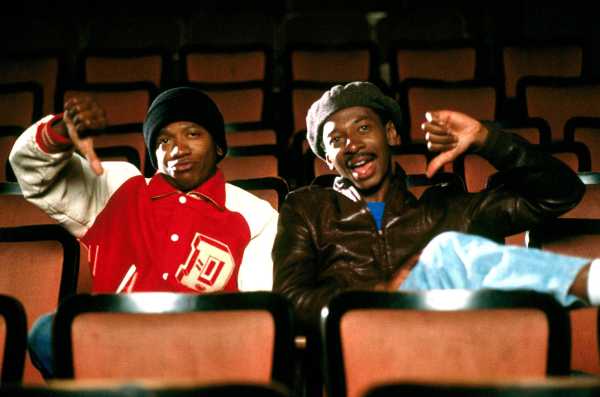
Jimmy Woodard and Robert Townsend in “Hollywood Shuffle.”Photograph from Samuel Goldwyn Films / Everett “Hollywood Shuffle”1987, Robert Townsend
This furious satire on the few and frequently demeaning opportunities for Black actors is also a paradoxical burst of enthusiasm for the power of popular movies and a comedic, but fiercely earnest, vision of what Hollywood could be if it included Black filmmakers to tell Black people’s stories—and to expand the industry’s forms and genres in the light of their own experiences.
“Alexandria: Again and Forever”1989, Youssef Chahine
Chahine plays a director in another film à clef, one that details a fictionalized Egyptian filmmaker’s passion for a young actor who flees him and the subsequent effort to make a film—of “Hamlet”—with a different star. Along the way, the drama details the highs and lows of the filmmaker’s career (complete with musical sequences) and the economic and political crises of the Egyptian cinema, centered on an industry strike and sit-in targeting government control of the arts (based on a real-life event in which Chahine took part).
“White Hunter Black Heart”1990, Clint Eastwood
This film à clef, about John Huston’s swaggering, self-defeating frivolity while making “The African Queen,” is based on a novel by Peter Viertel (Huston’s uncredited on-location script doctor). Eastwood also stars, gleefully and sardonically playing the role of a filmmaker whose directorial ethic is antithetical to his own.
“Jacquot de Nantes”1991, Agnès Varda
Agnès Varda’s bio-pic about the childhood and adolescence of her husband, the director Jacques Demy, is perhaps the greatest of all films about a primal passion for movies and hands-on love of the craft. (It also may be the most meticulously observed movie about D.I.Y. animation.) Varda intercuts the vigorous and exquisite drama (complete with the politics of the German Occupation during the Second World War) with clips of Demy’s own films, and she also provides the tender voice-over commentary; Demy himself, who was terminally ill during its production, appears on-camera to share his reminiscences, and Varda films him with a loving, tactile intimacy.
“Center Stage”1991, Stanley Kwan
This bio-pic about Ruan Lingyu, a Chinese silent-movie actress who became ensnared in political conflicts and journalistic scandalmongering, expands the bio-pic form—and the story’s historical purview—by way of interviews with her real-life colleagues and with the film’s own cast and crew.
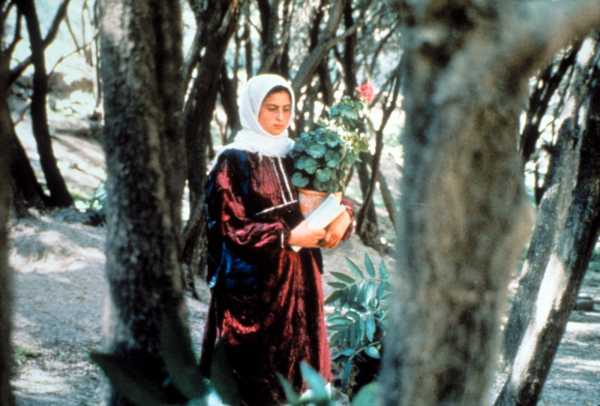
Photograph from TriStar Pictures / Everett “Through the Olive Trees”1994, Abbas Kiarostami
The Iranian director Abbas Kiarostami, whose 1990 film “Close-Up” reënacts the true story of a film fan impersonating a real-life director, here dramatizes—with a blend of documentary and fiction—the peculiarities of casting nonprofessionals in roles that resemble their lives, blurring emotional boundaries and putting them, and the movie, at risk. (It’s also a dramatization of the making of Kiarostami’s previous film, “Life, and Nothing More . . .”)
“Bye Bye Africa”1999, Mahamat-Saleh Haroun
The cinematic connections between art and life are dramatized—ambivalently—in this first feature by the Chadian director, who plays a character bearing his name, an aspiring filmmaker who returns home from France and finds his path to filmmaking blocked by Chad’s troubled film industry and his own romantic past.
“Sex Is Comedy”2002, Catherine Breillat
This is why there are intimacy coördinators: based on the real-life production of one of Breillat’s earlier films, this drama is centered on an explicit and risky sex scene that risks shattering the psyches of its actors—and its director.
“Gentlemen Broncos”2009, Jared Hess
When a teen-age fantasy author has his work adapted by two teen-age filmmakers, he gets a quick and bitter lesson in creative control—along with a sharper certitude of his own ecstatic vision, of the authentic power of superheroes, and of the movie industry’s woeful diminution of them.
“Like You Know It All”2009, Hong Sangsoo
The indignities and petty slights endured by an art-house director who’s a hero in his own mind but one of many in his field get an acerbic comedic workout in this reflexive drama, which wryly celebrates the power of cinema to turn rotten tomatoes into a worthy feast.
“You All Are Captains”2010, Oliver Laxe
When a young Spanish filmmaker (played by the director) teaches a filmmaking class for preteens in Morocco, his plan to imbue his pupils with a love of the art gets shredded by their desire to tell a story of their own, their love of Hollywood, and the complexities of local production, which turn into an entirely different story.
“Somewhere”2010, Sofia Coppola
The daughter of a Hollywood luminary offers an exquisite film about the childhood of a daughter of a Hollywood luminary—and about the delicate bond between father and daughter that’s both enriched by the luxuries and frayed by the demands of his strange milieu.
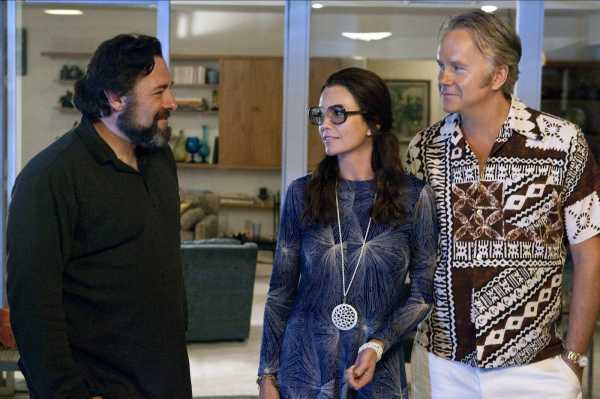
James Gandolfini, Diane Lane, and Tim Robbins in “Cinema Verite.”Photograph from Cinematic Collection / Alamy “Cinema Verite”2011, Shari Springer Berman and Robert Pulcini
This bustling yet nuanced fiction film—a historical drama about the making of one of the most daring of all documentaries, the public-television series “An American Family,” originally broadcast in 1973—shows what happens when filmmakers embed themselves in a suburban household and, with their interventionist presence, transform the relationships within.
“Silver Bullets”2011, Joe Swanberg
The harsh naturalism of ultra-low-budget personal filmmaking veers into expressionistic subjectivity in this story of an independent filmmaker who, when his partner acts in another director’s movie, plots artistic and personal revenge.
“Holy Motors”2012, Leos Carax
The power of an actor’s art and the pressure of an actor’s life are abstracted from the machinery of cinema and displayed as a phantasmagorical odyssey through Paris by limousine, with the actor’s wondrous on-location transformations and hectic emotional extremes converging and clashing with his identity.
“My Last Film” | “My First Film”2015, Zia Anger | 2019-22, live performance by Zia Anger
The 2015 short is a wild, near-apocalyptic comedy of independent filmmaking and its self-destructive pitfalls; Anger’s series of live performances involves the projection of clips of her unfinished feature from her laptop computer, on which she also maneuvers visual sidebars while delivering, in person, her spoken commentary, in an extraordinary story of the crash of a furiously personal story into the institutional norms of the independent-film business.
“The Competition”2016, Claire Simon
The changing nature of film school, from technical training to aesthetic conservatory, is examined in detail in this documentary, from France, which looks with ardent yet skeptical curiosity at the academic conversion of enthusiasm and passion into craft and judgment.
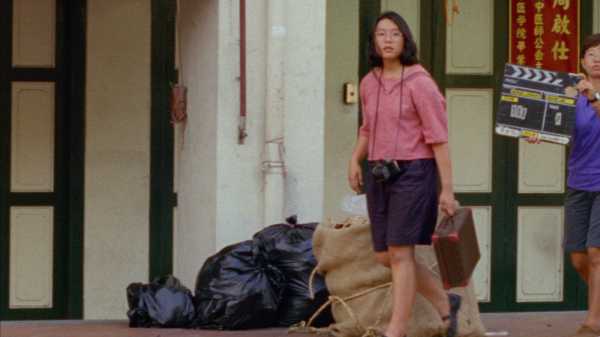
Sandi Tan in “Shirkers.”Photograph from Netflix / Everett “Shirkers”2018, Sandi Tan
This documentary turns long-vanished footage from one of the great might-have-beens, an on-location fantasy filmed with wild D.I.Y. creativity by teen-agers in Singapore in 1992, into a grand memory-piece about the place, the time, the young filmmakers’ preternaturally sophisticated inspiration, and the alluring creep who made off with the footage.
“Chained for Life”2018, Aaron Schimberg
In this caustic yet compassionate drama, a German director comes to the United States to make a film about a blind woman—and hires a sighted performer to play the role, alongside other actors who have disabilities; the drama is centered on who makes films about their own stories and how the industry reduces the very concept of stories to fit commercial preconceptions.
“Talking About Trees”2019, Suhaib Gasmelbari
This documentary, about the effort of Sudanese filmmakers to push back against a longtime government ban on movies and reopen a movie theatre, rescue their own earlier works, and attempt to make films again, should shake the most jaded of viewers back to alert gratitude for the plethora of films available at the touch of a button; nothing proves the awe-inspiring power of images like governments’ readiness to ban them.
Epilogue
-
“Max’s Film Début” (1910, Louis J. Gasnier and Max Linder)
-
“Little Nemo” (1911, Winsor McCay)
-
“A Film Johnnie” (1914, George Nichols)
-
“The Masquerader” (1914, Charlie Chaplin)
The making of movies was part of the art from its earliest days, as in this quartet of short films. The earliest of them features the reflexivity of the first international film-comedy star, Max Linder, who acts out the start of his movie career (and his hiring by the primordial mogul Charles Pathé, who plays himself) complete with deft physical comedy and startling special effects. The pioneering animator Winsor McCay dramatizes his own creative and technical processes (adding slapstick antics) and shows some of the resulting cartoons (which, regrettably, feature racist caricatures). Just over a month into his movie career, Charlie Chaplin plays a crazed movie fan who, after wreaking havoc in a theatre, sneaks into a studio—Keystone, Chaplin’s real-life employer—and raises hell there, too. A few months later, Chaplin, by then his own director, displays the refinement and the complexity of his Little Tramp character, in a story of a lazy and careless version of himself, behind the scenes in the studio, getting into costume and getting into trouble with his director, his producer, and his colleagues. ♦
Sourse: newyorker.com
